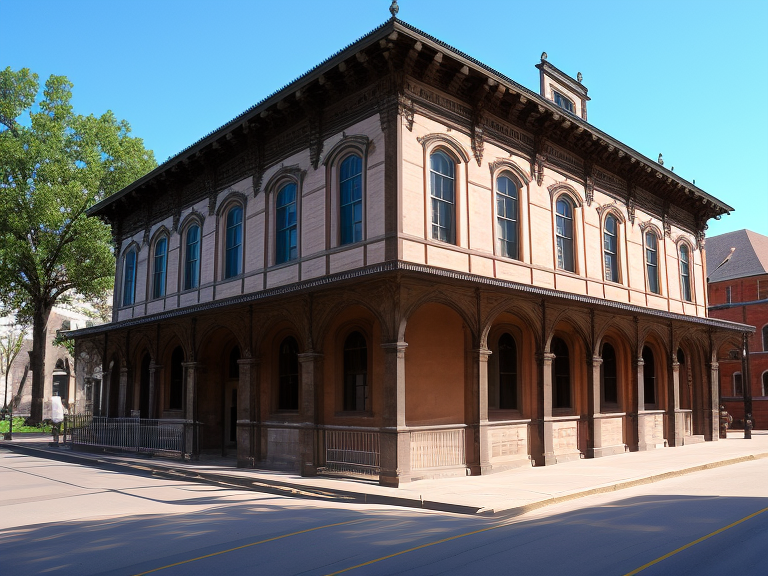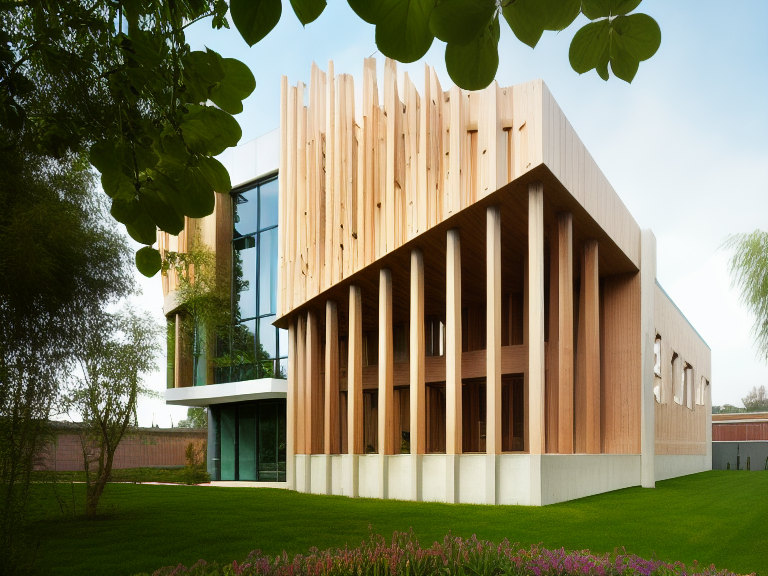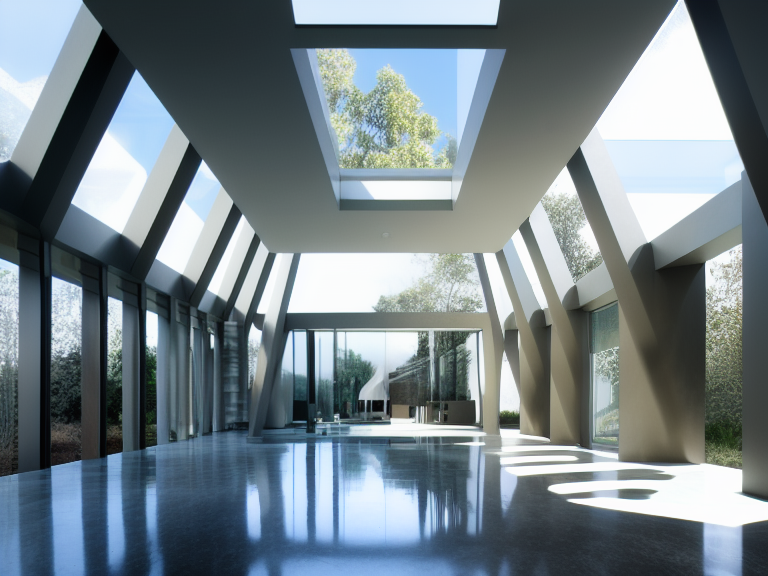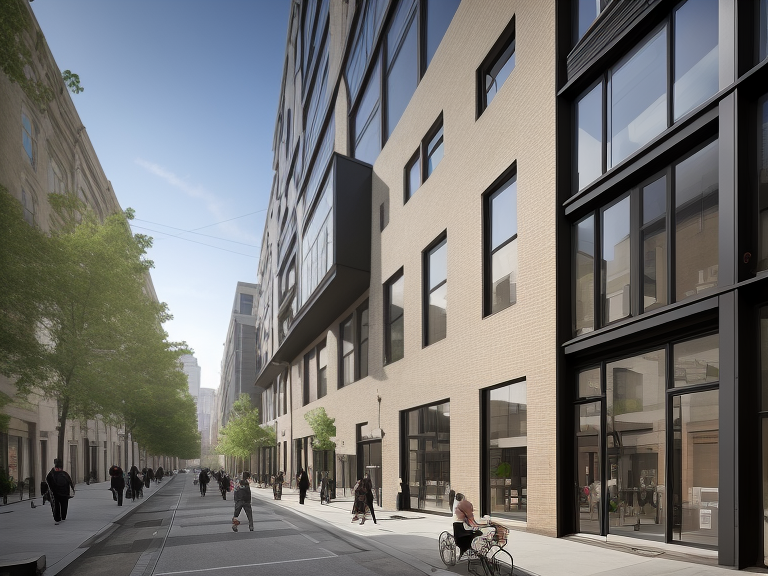Adaptive reuse, the practice of revitalizing old structures for new purposes, is a potent tool for preserving cultural heritage, sustaining community identity, and fostering urban renewal. By breathing new life into historic landmarks, industrial sites, and abandoned spaces, communities can reconcile past and present, celebrating their cultural legacy while embracing modern functionality. This creative approach to preservation not only reduces environmental impact but also empowers residents to take ownership of revitalization efforts, ultimately reshaping urban landscapes and fostering vibrant, thriving spaces. As we explore the nuances of adaptive reuse, the possibilities for transformation and rebirth become increasingly inspiring.
Preserving History, Sustaining the Future
As the world continues to urbanize and modernize, the preservation of historic structures becomes an essential component of sustaining cultural heritage and community identity. These structures serve as tangible links to the past, providing a sense of continuity and belonging. However, the challenge lies in balancing preservation with the need for modernization and urban growth. This is where adaptive reuse comes in – a forward-thinking approach that revitalizes historic buildings while incorporating sustainable and culturally sensitive practices.
Cultural sensitivity is vital in preservation efforts, as it guarantees that the historical and cultural significance of the structure is respected and protected. This involves engaging with local communities, understanding their values and concerns, and incorporating their input into the preservation process. By doing so, we can make sure that the adapted structure not only honors its past but also resonates with the present community.
Environmental stewardship is another critical aspect of adaptive reuse. By repurposing existing buildings, we reduce the need for new construction materials, minimize waste, and lower the carbon footprint of the project. This approach also encourages the adoption of sustainable design principles, such as energy-efficient systems and green building materials. By embracing cultural sensitivity and environmental stewardship, we can breathe new life into historic structures, creating vibrant and sustainable spaces that honor the past while embracing the future. Additionally, integrating sustainable architecture insights into adaptive reuse projects helps optimize energy consumption and enhance building performance. Thoughtful design choices, such as incorporating passive heating and cooling techniques or utilizing reclaimed materials, further contribute to the longevity and efficiency of these structures. Ultimately, this holistic approach not only preserves architectural heritage but also promotes resilient and eco-friendly urban development.
Breathing New Life Into Landmarks
As we shift our focus to breathing new life into landmarks, it is imperative to contemplate the multifaceted approach required to restore these iconic structures. This undertaking involves preserving historical integrity, revitalizing urban icons, and restoring community pride, thereby ensuring the continued relevance and significance of these cultural treasures. By examining these interconnected aspects, we can uncover the complexities and opportunities inherent in landmark revitalization.
Preserving Historical Integrity
Historic landmarks, when thoughtfully restored, can seamlessly blend original charm with modern functionality, thereby preserving their historical integrity while accommodating contemporary needs. Preserving historical integrity is vital in adaptive reuse projects, as it guarantees that the heritage of the structure is protected and showcased. This requires meticulous attention to detail, as even the slightest alteration can jeopardize the authenticity of the landmark.
Architectural accuracy is key in maintaining the historical integrity of a landmark. This involves meticulous research and documentation of the original design, materials, and construction techniques. Heritage protection is also essential, as it ensures that the cultural and historical significance of the landmark is safeguarded for future generations. By balancing preservation with modern functionality, adaptive reuse projects can breathe new life into old structures, creating vibrant and thriving spaces that honor their rich history.
Revitalizing Urban Icons
One hundred years ago, iconic landmarks, such as grand train stations, opulent theaters, and majestic government buildings, formed the backbone of urban landscapes, but many have since fallen into disrepair, awaiting revitalization. As urban legends, these structures hold a special place in the collective consciousness of a city’s inhabitants, evoking a sense of nostalgia and cultural heritage. Adaptive reuse offers a unique opportunity to breathe new life into these urban icons, transforming them into vibrant hubs of activity that showcase cultural fusion.
Restoring Community Pride
Furthermore, by restoring iconic landmarks, cities can reclaim their cultural heritage and rekindle community pride, fostering a sense of shared identity and belonging among residents. This revitalization process not only preserves the historical significance of these structures but also stimulates civic engagement and neighborhood revitalization efforts. As abandoned or underutilized landmarks are transformed, they become vibrant hubs of community activity, attracting new businesses, residents, and visitors. This, in turn, boosts local economies and enhances the overall quality of life for residents. By breathing new life into these iconic structures, cities can revive their unique character and charm, making them more attractive and livable. Additionally, restored landmarks serve as powerful symbols of community pride, inspiring residents to take ownership and become more invested in their neighborhoods. As a result, cities can experience a resurgence of community spirit, civic engagement, and neighborhood revitalization, ultimately leading to a more vibrant and thriving urban environment.
Repurposing Industrial Heritage Sites
Many former industrial sites, once the backbone of local economies, now stand as vacant relics of a bygone era, beckoning creative redevelopment strategies to revitalize their significance. These industrial heritage sites hold immense potential for adaptive reuse, offering a unique opportunity to breathe new life into abandoned structures and reconnect communities with their industrial legacy. By repurposing these sites, developers can create vibrant hubs of cultural fusion, where historic landmarks merge with modern innovations.
Industrial legacy is preserved through the retention of original architectural features, while new uses and functionalities are carefully integrated to create thriving, mixed-use destinations. This fusion of old and new not only honors the site’s history but also injects fresh vitality into the surrounding area. Adaptive reuse strategies can transform former factories, warehouses, and manufacturing facilities into trendy restaurants, boutique hotels, art galleries, and trendy residential spaces.
Cultural fusion is achieved by blending the site’s industrial heritage with modern cultural expressions, resulting in unique and engaging experiences. For instance, an old textile mill might be reborn as a trendy arts district, featuring studios, galleries, and performance spaces. By embracing the complexities of industrial heritage, developers can craft immersive experiences that celebrate the site’s history while catering to contemporary tastes. As industrial heritage sites are repurposed, they become dynamic demonstrations of the power of adaptive reuse, revitalizing communities and rekindling a sense of pride in their industrial legacy.
From Abandoned to Iconic Spaces
Through the alchemy of adaptive reuse, forsaken industrial relics are transformed into iconic spaces that pulsate with new life, reinvigorating the urban fabric and redefining the skyline. Once-forgotten relics are now coveted urban gems, where cultural fusion and architectural revival converge. The process not only preserves heritage chic but also injects vintage flair into the urban landscape.
In this metamorphosis, forgotten relics are reborn as vibrant hubs, where community engagement and creativity thrive. Adaptive reuse breathes new life into abandoned structures, reconciling past and present to forge unique, culturally rich environments. This fusion of old and new yields distinctive, Instagram-worthy destinations that captivate visitors and locals alike. By embracing the patina of age, developers and architects can craft immersive experiences that honor the past while embracing innovation.
As a result, cities are reinvigorated, and their skylines redefined. The adaptive reuse of industrial heritage sites reveals the potential for architectural revival, yielding iconic spaces that resonate with the community. By rescuing relics from oblivion, we can create thriving, culturally rich environments that celebrate our collective heritage. In this era of adaptive reuse, the boundaries between past and present dissolve, yielding a vibrant tapestry of urban renewal.
Revitalizing Urban Neighborhoods
Revitalizing urban neighborhoods is an essential aspect of breathing new life into old structures, as it not only transforms the physical landscape but also enhances the social and economic fabric of the community. To achieve this, urban renewal projects, historical preservation efforts, and community engagement strategies must be carefully integrated to create thriving neighborhoods that honor the past while embracing the future. By adopting a holistic approach, cities can tap into the full potential of their historic neighborhoods, fostering vibrant hubs of activity that benefit both residents and visitors alike.
Urban Renewal Projects
Urban renewal projects have emerged as an important strategy for revitalizing urban neighborhoods, transforming neglected areas into thriving communities. These initiatives involve the redevelopment of underutilized or abandoned properties, injecting new life into urban landscapes. However, urban renewal projects often raise gentrification concerns, as they can displace long-time residents and small businesses, altering the community’s character. To mitigate these concerns, municipalities must prioritize inclusive development, ensuring that new projects benefit both existing and new residents.
Municipal financing plays a significant role in supporting urban renewal projects. Governments can provide incentives, such as tax breaks or low-interest loans, to attract developers and investors. Additionally, public-private partnerships can facilitate collaboration between stakeholders, leveraging resources and expertise to drive projects forward. By balancing economic growth with social responsibility, urban renewal projects can revitalize neighborhoods while preserving their cultural identity. As cities continue to evolve, innovative urban renewal strategies will be essential for creating vibrant, sustainable, and equitable communities.
Historical Preservation Efforts
As cities endeavor to revitalize neglected neighborhoods, preserving historical structures becomes an integral component of urban renewal, allowing communities to reclaim their heritage and foster a sense of continuity. Historical preservation efforts play an essential role in revitalizing urban neighborhoods, as they help to maintain the cultural significance and architectural heritage of a community.
| Historical Structure | Preservation Method | Result |
|---|---|---|
| Old factories | Adaptive reuse as residential lofts | Revitalized waterfront area |
| Historic theaters | Restoration of original architecture | Thriving arts and culture scene |
| Abandoned schools | Conversion to community centers | Enhanced community engagement |
Community Engagement Strategies
Through inclusive and participatory approaches, community engagement strategies can empower residents to take ownership of revitalization efforts, fostering a sense of community and promoting sustainable urban renewal. By engaging residents, stakeholders, and community groups, adaptive reuse projects can guarantee that revitalization efforts align with local needs and aspirations. Effective community engagement strategies involve conducting stakeholder interviews to gather insights on community concerns, aspirations, and priorities. This information is then used to shape project planning and design, ensuring that the revitalized space meets the needs of the community. Community outreach initiatives, such as public meetings, workshops, and surveys, can also facilitate communication and collaboration between stakeholders, fostering a sense of shared ownership and responsibility. By prioritizing community engagement, adaptive reuse projects can create vibrant, thriving spaces that promote social cohesion, economic growth, and environmental sustainability. By doing so, these projects can revitalize urban neighborhoods, enhancing the quality of life for residents and contributing to the overall vitality of the community.
Sustainability Through Creative Reuse
Reimagining existing structures can greatly reduce the environmental impact of new construction, allowing us to preserve history while minimizing waste. Adaptive reuse is an essential component of sustainable development, and creative reuse is at the forefront of this movement. By repurposing old buildings, we can reduce the demand for new materials, decrease energy consumption, and minimize waste.
Incorporating green architecture and eco-friendly design principles into adaptive reuse projects can further enhance their sustainability benefits. For instance, retrofitting old buildings with energy-efficient systems, solar panels, and green roofs can markedly reduce their carbon footprint. Additionally, incorporating recycled and locally sourced materials into the renovation process can minimize waste and support local economies.
Through creative reuse, we can transform underutilized buildings into vibrant community hubs, promoting social sustainability and community engagement. By preserving historical structures, we can also maintain a sense of cultural heritage and community identity. As the world continues to urbanize, adaptive reuse offers a unique opportunity to reimagine our built environment, combining history, sustainability, and innovation. By embracing creative reuse, we can create thriving, eco-friendly spaces that not only reduce our environmental footprint but also enrich our communities.
Frequently Asked Questions
What Are the Economic Benefits of Adaptive Reuse Projects?
In addition, as urban landscapes evolve, a pressing question arises: what economic benefits do adaptive reuse projects bring to the table? The answer lies in the treasure trove of incentives and opportunities hidden within these revitalized structures. Tax incentive opportunities abound, enticing investors and developers to breathe new life into historic buildings. Additionally, adaptive reuse projects possess considerable job creation potential, stimulating local economies and fostering community growth.
How Do You Balance Preservation With Modernization Needs?
Balancing preservation with modernization needs requires carefully managing design compromises. Cultural sensitivity is essential when revamping historic structures, ensuring that modifications honor the original intent while meeting contemporary demands. By embracing innovative solutions, architects can harmoniously merge old and new, preserving the essence of the past while injecting fresh functionality. This thoughtful approach enables the creation of vibrant, adaptive spaces that respect heritage while catering to modern needs.
Can Adaptive Reuse Projects Be Done on a Small Budget?
Can adaptive reuse projects be done on a small budget? Absolutely. By embracing creative phasing, where renovations are staggered over time, and employing budget hacks, such as repurposing existing materials, projects can be made more affordable. This innovative approach enables even the most modestly funded initiatives to breathe new life into old structures, revitalizing communities without breaking the bank.
What Role Does Community Engagement Play in Adaptive Reuse?
Community engagement plays a pivotal role in successful urban renewal projects. Effective stakeholder outreach is essential in garnering support and fostering a sense of ownership among local residents. This collaborative approach guarantees that neighborhood revitalization efforts align with the community’s vision and needs. By engaging citizens in the planning process, developers can create vibrant, inclusive spaces that drive economic growth and enhance quality of life.
Are Adaptive Reuse Projects Limited to Historic Buildings Only?
“Revamping relics of the past” is often misconceived as being exclusive to historic buildings. However, adaptive reuse projects can breathe new life into any underutilized structure, regardless of age. While historic buildings present unique opportunities, modern structures can also be repurposed to meet contemporary needs. Structural constraints can be creatively overcome to infuse modern functionality, yielding innovative spaces that blend heritage and innovation.



